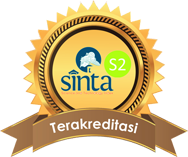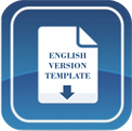Development of Google Sites-based Multiple Representations Learning Media on Benzene and Its Derivatives Topic
DOI:
https://doi.org/10.15575/jtk.v8i1.25666Keywords:
benzene derivatives, learning media, multiple representations, Google SitesAbstract
COVID-19 pandemic accelerated the transformation of education and forced the digitalization of education to create effective learning. The understanding of complex chemical structures and reactions holds great significance in the realm of chemistry education. Benzene and its derivatives are particularly challenging topics that require a robust representation approach. The research aims to develop and assess the feasibility of Google Sites-based multiple representations learning media on benzene and its derivatives material. The research utilized the Research and Development (R&D) approach, adhering to the ADDIE (analysis, design, development, implementation, and evaluation) development model. The research was carried out until the development stage. The developed learning media effectively integrated three levels of chemical representation for benzene and its derivatives, utilizing various features such as text, animation, video, 3D molecular simulation, and images. The validation conducted by content and media experts indicated that the learning media is valid with scores of 95.8% and 92.5%, respectively, with excellent category. Furthermore, the product quality assessment conducted by experts and students' responses showed that media could be used practically, with percentages of 95% and 95% as excellent categories. These findings confirm the suitability of the developed learning media for facilitating students' understanding of benzene and its derivatives during the learning process.
References
Abdinejad, M., Talaie, B., S, H., Qorbani, & Dalili, S. (2021). Student perceptions using augmented reality and 3d visualization technologies in chemistry education. Journal of Science Education and Technology, 30, 87-96. https://doi.org/10.1007/s10956-020-09880-2
Agustian, N., & Salsabila, U. H. (2021). Peran teknologi pendidikan dalam pembelajaran. Islamika, 3(1), 123-133. https://doi.org/10.36088/islamika.v3i1.1047
Arief, R. (2017). Online Student Presence Application Using Google Forms, Sheets, Sites, Awesome Table, and Gmail. Paper presented at the Seminar Nasional Sains dan Teknologi Terapan, Surabaya: Institut Teknologi Adhi Tama.
Azhar, M., Ulianas, A., Khair, M., M, H. P., S, N. A., & Zulhendra. (2019). Enhancement of teacher knowledge in making ict-based chemistry learning media with emphasis on three levels of representation. Pelita Eksakta, 2(1), 15-21. https://doi.org/10.24036/pelitaeksakta/vol2-iss1/40
Azis, T. N. (2019). Strategi pembelajaran era digital. Paper presented at the The Annual Conference On Islamic Education And Social Science, Yogyakarta: Universitas Islam Indonesia.
Davis, G. (2010). Senior secondary school students' and teachers' perception of the difficult organic chemistry topics in the central region.Thesis. University of Cape Coast.
Dilmaç, S. (2020). Students' opinions about the distance education to art and design courses in the pandemic process. World Journal of Education, 10(3), 113-126. https://doi.org/10.5430/wje.v10n3p113
Dutton, W. H., & Loader, B. D. (2005). Digital academe: new media in higher education and learning: London: Routledge.
Firmansyah, R., Putri, D. M., Wicaksono, M. G. S., Sheila Febriani Putri, A. A. W., & Palil, M. R. (2021). Educational transformation: an evaluation of online learning due to Covid-19. International Journal of Emerging Technologies in Learning (iJET), 16(7), 61. https://doi.org/10.3991/ijet.v16i07.21201
Gilbert, J. K., & Treagust, D. F. (2009). Multiple representations in chemical education (Vol. 4). Dordrecht: Springer.
Gkitzia, V., Salta, K., & Tzougraki, C. (2011). Development and application of suitable criteria for the evaluation of chemical representations in school textbooks. Chemistry Education Research and Practice, 12(1), 5-14. https://doi.org/10.1039/c1rp90003j
Harta, J. (2019). Kajian kurikulum kimia SMA dan SMK. Yogyakarta: Deepublish.
Isnaini, M., & Ningrum, W. P. (2018). Hubungan keterampilan representasi terhadap pemahaman konsep kimia organik. Orbital: Jurnal Pendidikan Kimia, 2(2), 12-25. https://doi.org/10.19109/ojpk.v2i2.2637
Japrizal, J., & Irfan, D. (2021). Pengaruh penggunaan media pembelajaran berbasis google sites terhadap hasil belajar siswa pada masa covid-19 di SMK negeri 6 bungo. Jurnal Vokasi Informatika, 100-107. https://doi.org/10.24036/javit.v1i3.33
Kapici, H. O. (2023). From symbolic representation to submicroscopic one: preservice science teachers' struggle with chemical representation levels in chemistry. International Journal of Research in Education and Science, 9(1), 134-147. https://doi.org/10.46328/ijres.3122
Kaur, A., Datta, P., & Mantri, A. (2022). Educational applications of immersive technology: a technical report. ECS Transactions, 107(1), 8163-8174. https://doi.org/10.1149/10701.8163ecst
Khairiah, S. (2017). Pengembangan modul berbasis masalah pada materi benzena dan turunannya disekolah menengah atas. Skripsi. Universitas Negeri Medan.
Kwartolo, Y. (2010). Teknologi informasi dan komunikasi dalam proses pembelajaran. Jurnal Pendidikan Penabur, 14(9), 15-43. Retrieved from https://www.academia.edu/3159281/Teknologi_informasi_dan_komunikasi_dalam_proses_pembelajaran
Listantia, L., Sumarti, S. S., & Prasetyadoi, A. T. (2015). Pengembangan media pembelajaran flash berbasis guided discovery untuk hasil belajar siswa. Chemistry in Education, 4(2), 22-28. Retrieved from https://journal.unnes.ac.id/sju/index.php/chemined/article/view/5410
Mallet, D. G. (2007). Multiple representations for systems of linear equations via the computer algebra system Maple. International Electronic Journal of Mathematics Education, 2(1), 16-31. https://doi.org/10.29333/iejme/173
Ngongo, V. L., Hidayat, T., & Wiyanto, W. (2019). Pendidikan di era digital. Prosiding Seminar Nasional Program Pascasarjana, Palembang: Universitas PGRI.
Putri, N. I., Herdiana, Y., Munawar, Z., & Komalasari, R. (2021). Teknologi pendidikan dan transformasi digital di masa pandemi covid-19. Jurnal ICT: Information Communication & Technology, 20(1), 53-57. Retrieved from https://www.researchgate.net/publication/353479868_Teknologi_Pendidikan_dan_Transformasi_Digital_di_Masa_Pandemi_COVID-19
Ramli, M. (2012). Media dan teknologi pembelajaran. Banjarmasin: Antasari Press.
Salic-Hairulla, M., Agad, L., Pitonang, D. J. A., & Terrado, T. F. B. (2020). A webquest in teaching circulatory system using google site for grade VI pupils. Malaysian Journal of Movement, Health & Exercise, 9(1), 31-44. https://doi.org/10.15282/mohe.v9i1.313
Sholihah, I. (2021). Pembuatan game edukasi puzzle berbasis android pada Materi Benzena dan turunannya. Thesis. UIN Sunan Gunung Djati Bandung.
Siswono, T. Y. E. (2019). Paradigma penelitian pendidikan pengembangan teori dan aplikasi pendidikan matematika. Bandung: Remaja Rosdakarya.
Sitorus, B. (2022). Penerapan model pembelajaran berbasis STEM dalam upaya meningkatkan hasil belajar kimia siswa kelas XII MIPA 7 SMA Negeri 7 Denpasar. Indonesian Journal of Educational Development, 3(1), 25-33. https://doi.org/10.5281/zenodo.6566334
Suprihatiningrum, J. (2013). Strategi pembelajaran teori dan aplikasi. Yogyakarta: Ar-ruzz media.
Topal, G., Oral, B., & Mustafa, O. (2007). University and secondary school students' misconceptions about the concept of" aromaticity" in organic chemistry. International Journal of Environmental and Science Education, 2(4), 135-143. Retrieved from https://eric.ed.gov/?id=EJ901278
Upahi, J. E., & Ramnarain, U. (2019). Representations of chemical phenomena in secondary school chemistry textbooks. Chemistry Education Research and Practice, 20(1), 146-159. https://doi.org/10.1039/c8rp00191j
Wu, P., Yu, S., & Wang, D. (2018). Using a learner-topic model for mining learner interests in open learning environment. Journal of Educational Technology & Society, 21(2), 192-204. Retrieved from https://www.jstor.org/stable/26388396
Zamhari, M., Ridzaniyanto, P., & Kangkamano, T. (2021). Interactive android module development containing three chemical representation levels on material of salt hydrolysis. Indonesian Journal on Learning and Advanced Education (IJOLAE), 4(1), 45-56. https://doi.org/10.23917/ijolae.v4i1.12590
Downloads
Published
How to Cite
Issue
Section
Citation Check
License
Authors who publish with this journal agree to the following terms:
- Authors retain copyright and grant the journal right of first publication with the work simultaneously licensed under a Creative Commons Attribution-ShareAlike that allows others to share the work with an acknowledgement of the work's authorship and initial publication in this journal.
- Authors are able to enter into separate, additional contractual arrangements for the non-exclusive distribution of the journal's published version of the work (e.g., post it to an institutional repository or publish it in a book), with an acknowledgement of its initial publication in this journal.
- Authors are permitted and encouraged to post their work online (e.g., in institutional repositories or on their website) prior to and during the submission process, as it can lead to productive exchanges, as well as earlier and greater citation of published work (See The Effect of Open Access).








